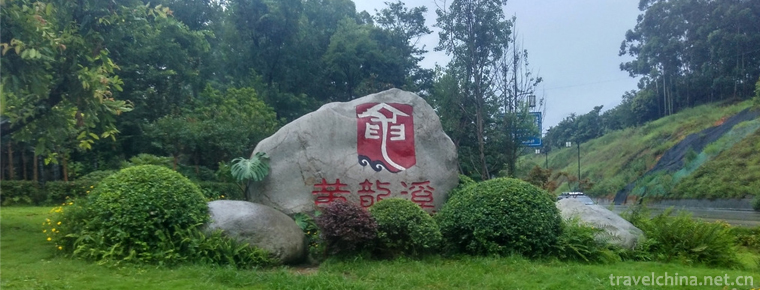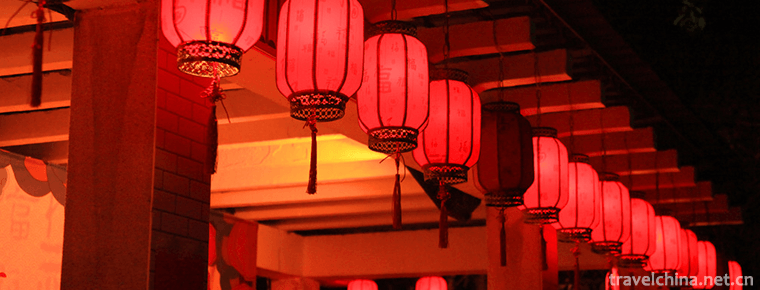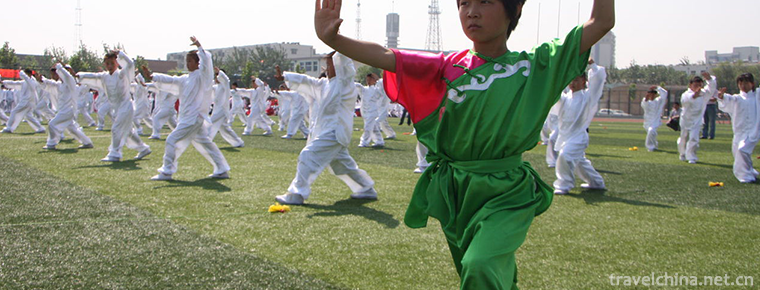2018-10-02

- By ChinaWiki.net
- Chinese Edition
- 2020-11-07
Da Zang Temple
Located in the north of malkang County, dazang temple is about 500 kilometers away from Chengdu City and is located in the deep mountains above 3000 meters above sea level. The full name of the temple is gadandhe tsanglhundrupling, which means "duduxin is the land of achievement of the Ren Yun". "Great Tibetan" means "perfect confidence" in Tibetan.
The last temple built in Jiarong area by tsako Ngawang drakpa was completed in 1414 A.D.
In the history of Chinese literature, the Tibetan temple has also been translated into "Dacang Temple", "daze Temple" and so on, which is due to the difference of Tibetan transliteration in Chinese. In a certain period of time, the Tibetan people in Anduo area were also called "chagu Temple".
In history, the Tibetan temple is very famous and can be called the general temple of Gelug school in northern Sichuan. It is often mentioned in the biographies of master zongkaba, the history of politics and religion in Anduo, and the historical materials of Ming and Qing Dynasties. In the Potala Palace in Lhasa, a mural of "an important temple in Tibet" also includes this temple.
geographical position
The site of the great Tibetan temple is like a giant elephant in the shape of a mountain, and the temple is built in the neck of the elephant. In addition, the nearby mountains are like surrounding the center, forming a natural arrangement of 13 great Vajra Mandala. In the center of the temple, there is a peak in the East, South, West and North, which is the four directions of the Dharma of the temple city.
Architectural features
It has developed to over 100 buildings in the past dynasties, just like a small city. In the heyday of the temple, there were more than 800 monks. However, it is generally recorded that the number of monks is 500, which is derived from the meaning of 500 Arhats in the history of Buddhism.
Entering the temple gate, the square about 20 meters wide is to the great scripture hall: gilded roof, and the front is hung with eight treasures with black background and white pattern. The interior of the Jingtang hall is gorgeous, and the upper layer of the wall is a delicate Thangka. The middle of the hall is used for Manza (the highest specification of Buddha offering objects) for Buddha and living Buddha portraits, and the four walls of the left ear hall are used for thousands of Buddha statues, and the right ear hall is used for thousands of Tara statues.
In the 1950s and 1960s, there were six Buddhist temples in the dazang temple, including three Maitreya hall, zongkaba master hall, Daxiong hall and Dharma protection hall, and one Qizhu tower and one Kankang tower, respectively, which served as two Dharma platforms. The roof of the hall was gilded with bronze tiles, which was given by the emperor of Han Dynasty. There is a monastery on the mountain behind the temple, which is used by the monks for meditation. In front of the temple, there is a 30 meter high Pagoda with numerous precious sacred objects.
Collection of cultural relics
In history, due to its long history and scale, dazang temple is honored as "ZHACANG second", ranking second only to Gandan temple in Zuting of Gelu school. It can be called the general temple of the Gelu school in northern Sichuan. It is often mentioned in the biographies of master zongkaba, the political and religious history of andow, and the historical materials of Ming and Qing Dynasties. In the Potala Palace in Lhasa, there is a mural painting of "an important temple in Tibet", including this big temple.
There are numerous sacred objects and precious scriptures in each hall of the Dazhang temple. The Maitreya hall has dozens of meters high statues of future Buddha. Even if it is an ordinary monk's house, each building has a complete set of the Tripitaka Sutra (divided into two parts in Tibetan Buddhism, ganzhur and danjur). The walls and ceiling of each room are covered with murals, recording the life history of Buddha and his ancestors.
In the Ming and Qing Dynasties, temples were highly respected by emperors and the imperial court. They were provided by emperors for a long time, including ritual objects, seals, gold, treasures, cloth and daily necessities of monks. There are a seal of ivory presented by Emperor Qianlong, a few brocade and cloth provided by Qianlong, loose pieces of Emperor Qianlong's Tianyi and five Buddha crowns (there were 50 sets of them at that time, which were of great value), many letters of imperial edicts and imperial edicts, and one Gong provided by the general of the Ming Dynasty. This Gong is a treasure of the Da Zang temple. Its sound is very bright and beautiful. It is well known far and near. In addition to the numerous precious offerings and respect from the emperors of Ming and Qing Dynasties and central Tibet, the Tibetan temple was also supported and supported by 18 local chieftains in history, and became the Buddhist authority and center in northern Sichuan.
Related information
The Tibetan temple foundation is one of the charitable organizations under the International Buddhist Union. It was registered as a non-profit-making tax-free organization in Hong Kong in 1997. The purpose of the foundation is to promote spiritual culture, rebuild dilapidated monasteries in China, establish a complete Sangha education, carry out poverty relief and aid programs in remote areas of China, provide free or low fee medical services in remote areas, and publish Buddhist laws and books related to Buddhist culture.
The free medical service of Buddha heart hall is a charity project of the Tibetan temple foundation. Efforts are being made to set up free clinics in poor mountainous areas to provide basic diagnosis and treatment and medicines for residents in poor mountainous areas in mainland China. The Buddhist heart hall also plans to open a number of small clinics and mobile medical vehicles in mountainous areas, providing free Tibetan and Western medicine diagnosis and treatment services to villages in need, and subsidizing the training of Tibetan traditional doctors.
Since its establishment, the foundation has been cooperating with Sichuan dazang temple, Sichuan Xiadu temple, Lhasa Sera Monastery monastery Jiarong hall and India Sera Monastery taste house to provide appropriate education, living and medical expenses for monks, including providing food and education life for all monks in dazang temple, Xiadu temple and Jiarong Hall of Sala temple in India for a long time, and for the samadhi of Sala monastery in India More than 1500 monks were injected with hepatitis antibody vaccine. From time to time, the foundation also provides living and education funds for many nunneries in Lhasa.
[source of atlas]
Ask a Question
Your email address will not be published.



0 Questions